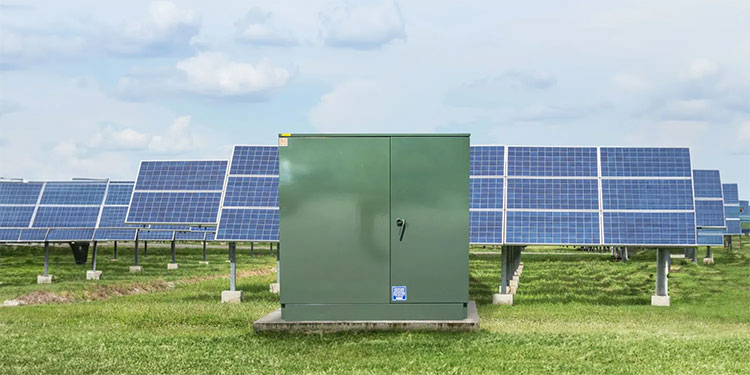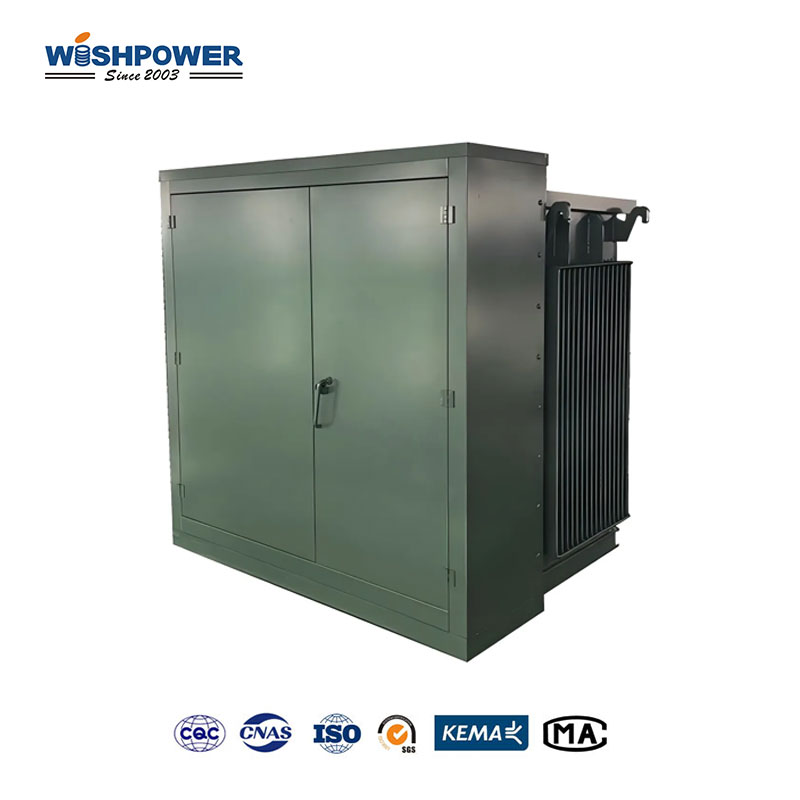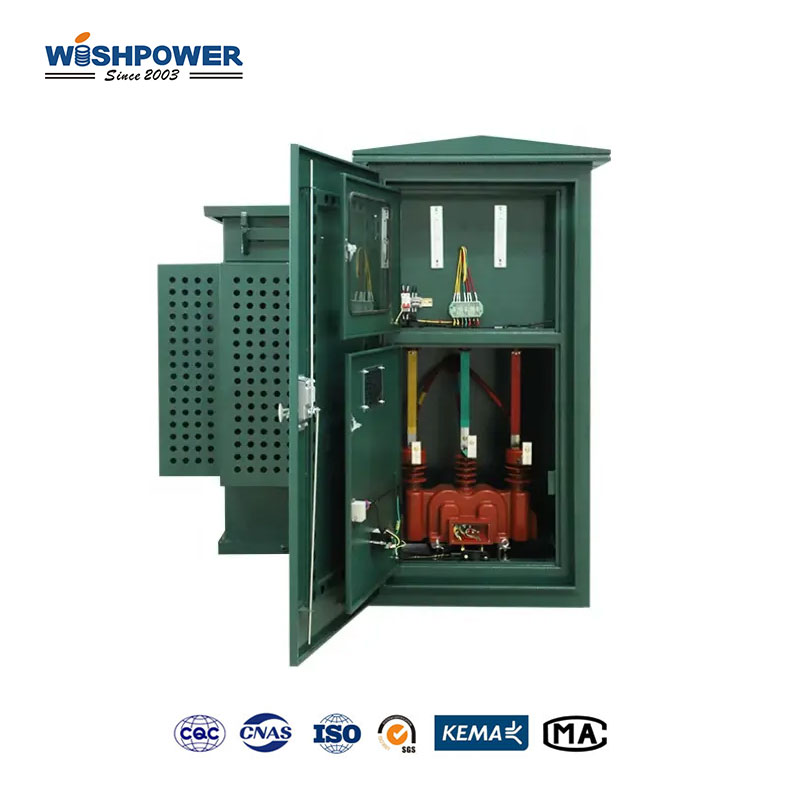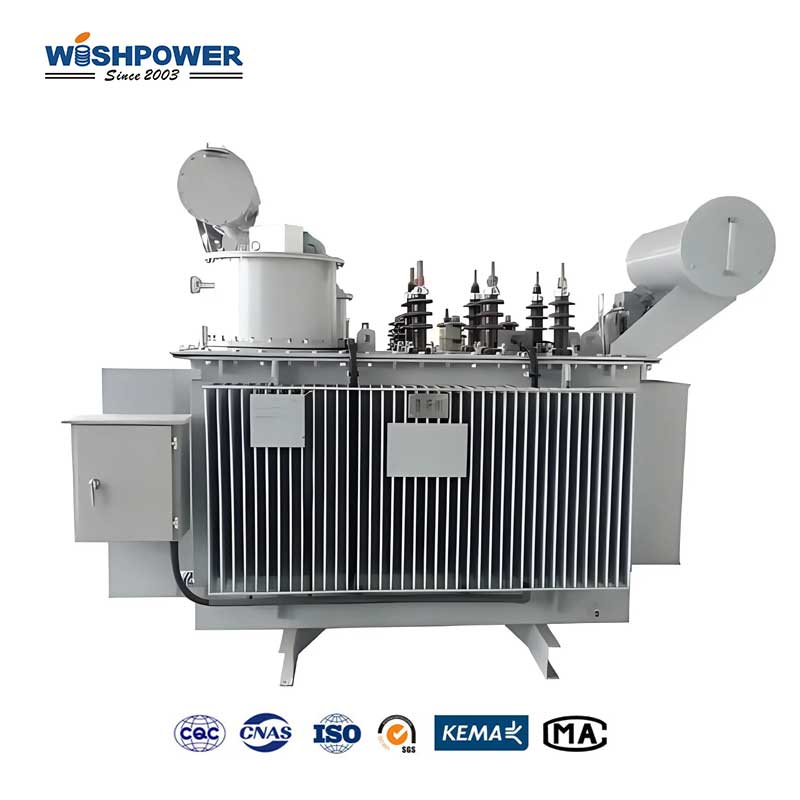What is a PV transformer?
The PV transformer (Photovoltaic transformer) functions as a specialized electrical transformer that specifically supports photovoltaic (solar) power systems. These transformers serve as indispensable power converters that transform solar energy into electrical power for utility in solar power facilities and commercial sites as well as residential solar setups.

Key Functions of a PV Transformer
- Voltage Conversion
The main responsibility of a PV transformer exists in voltage conversion operations. The power output of solar panels exists as DC electricity while the power grid runs on AC electricity. A PV transformer converts electricity from direct current through a process of inversion into alternating current. The device regulates power voltage according to the local power grid standards while increasing or lowering voltage output to match system requirements.
- Isolation and Protection
Through its electrical isolation capability, the PV transformer keeps solar power systems separate from the grid to stop electrical faults from spreading between them. The isolation system protects important equipment while ensuring staff security while they operate on the system. Surge protection comes from the transformer to guard your system during electrical spikes during thunderstorms and similar grid disturbances.
- Energy Efficiency
Powerful solar-produced energy becomes practical electrical energy through the operation of the PV transformer which maximizes system performance outcomes. Electric energy distribution to the grid reaches its highest level because the transformer efficiently minimizes conversion process losses.
- Ensuring Grid Compliance
The particular power grids require specific voltage and frequency characteristics. Solar power generated by PV transformers meets the exact requirements needed for running on the power grid. This feature is crucial for electrical grid stability and prevents both grid damage and solar system harm.
Benefits of Using PV Transformers in Solar Power Systems
- Enhanced Safety
Your main goal as a PV transformer is to establish clear electrical separation between solar array systems and power grid electrical infrastructure. Energetic isolation between solar systems and the grid ensures safe operations across the entire system. A transformer’s fault-prevention operation stops electrical surges from affecting the grid while protecting both technological equipment and human workers from potential hazards.
- Improved Efficiency
PV transformers serve as key elements in energy systems because they boost the operational efficiency of power generation through solar resources. These transformers optimize the conversion process to deliver maximal grid energy by converting solar panel-powered DC supply into AC output efficiently.
- Reliability and Longevity
High-quality materials combined with a robust construction enable PV transformers to exhibit long-term reliability. PV transformers maintain excellent durability through their construction which allows them to survive environmental elements such as temperature fluctuations and dust exposure with a humidity outlook.
- Grid Stability
Through solar power conversion and necessary conditioning processes PV transformers guarantee stable operation of the electrical grid. Solar power integration through grid systems has the potential to produce variations in voltage and frequency results. The technology behind SVB switches functions to reduce electrical voltage oscillations thus generating stable power for grid delivery systems.
Applications of PV Transformers
- Utility-Scale Solar Power Plants
Industrial solar power facilities need large efficient PV transformers because they operate with immense energy outputs from numerous solar panels. PV transformers function as part of extensive substation systems that distribute electricity to the grid network.
- Commercial and Industrial Installations
Solar energy-operated commercial enterprises need PV transformers as a crucial element for grid integration of their power supply systems. The transformers provide the conversion needed to transform solar panel-produced energy into usable voltage and frequency standards for grid connection.
- Residential Solar Systems
Homeowners who install smaller-scale residential solar electricity systems depend on PV transformers to convert solar power for integration with the electrical grid. Smaller transformation devices serve crucial purposes in residential systems although they support superior energy conversion together with grid standards.
Conclusion
PV transformers are central units in solar power systems because they enable efficient grid-interfacing of electricity produced from solar power generation. The expanding use of renewable energy will sustain the market demand for PV transformers until further notice. These devices provide multiple benefits that enhance safety while improving efficiency and supporting stable grid operation. Utility-scale solar power plants alongside commercial, industrial, and residential systems benefit from these applications enabling global progress toward clean energy solutions.
If you have different opinions or want to know more, please leave a message on the website or contact us directly at info@wishpower.net

















